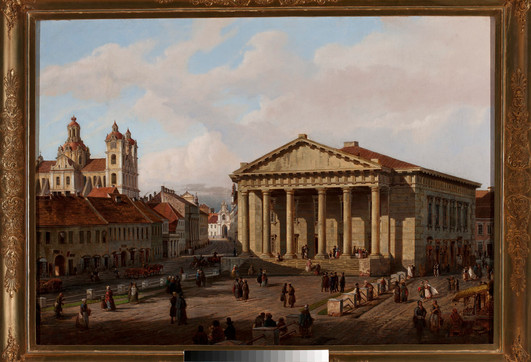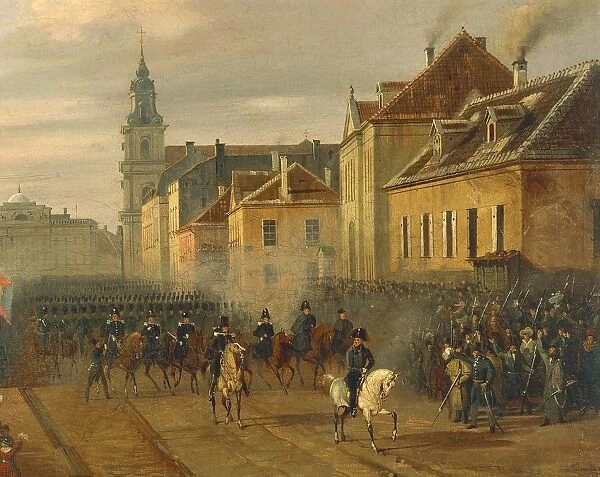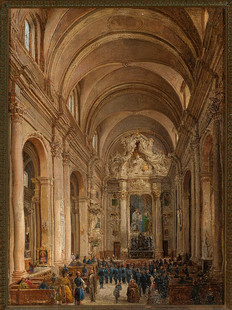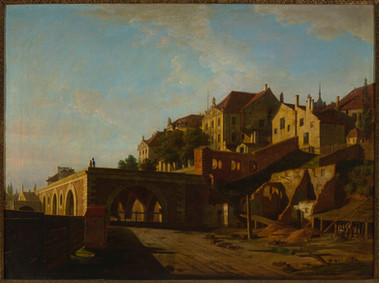
Marcin Zaleski, born 1796, was a Polish painter, a representative of Neoclassicism, considered the greatest Polish vedutist of the 19th century. A veduta is a highly detailed, usually large-scale painting or, more often, print of a cityscape or some other vista. The painters of vedute are referred to as vedutisti or a vedutist. He mostly painted the cityscapes of Warsaw, Kraków and Vilnius.
Zaleski was born in Kraków. He received his education in Kraków and Warsaw. In 1817−1822, Zaleski worked as a decorator in a Warsaw theatre while producing copies of paintings. In 1828 the artist exhibited his own work for the first time and received a scholarship to continue his education as a painter. Zaleski became particularly well known for works depicting city views and architecture of Warsaw, Kraków and Vilnius.
Among Zaleski's works is a series of paintings on the November Uprising in Warsaw, to which he was an eyewitness. His paintings, alongside those of Bernardo Bellotto, were used in order to reconstruct historical buildings in Warsaw that were damaged or destroyed during the Second World War.

He then continued to study painting in Germany, France and Italy. He was also among the first daguerreotypists in Warsaw. He took his first photographs around 1840, however they have not survived to the present day and it remains unknown what exactly they depicted. In 1846 the artist became a professor of perspective at the School of Fine Arts in Warsaw.
Marcin Zaleski died in Warsaw in 1877 at the age of 80 and was buried the Powązki Cemetery. His works can be found at the National Museum in Warsaw, Poland, the Turkey's Adam Mickiewicz Museum and the Gomel Palace.












































































תגובות